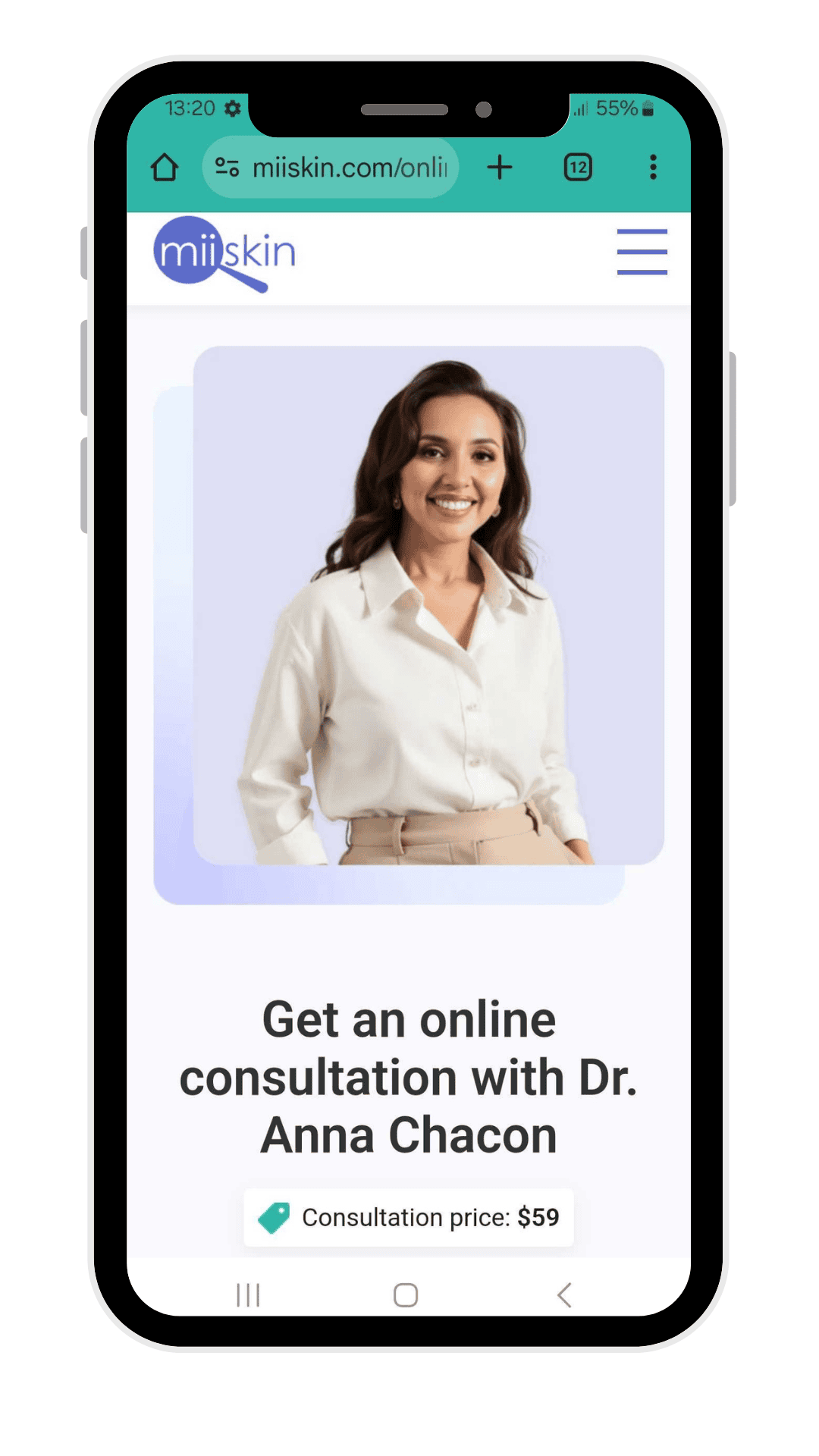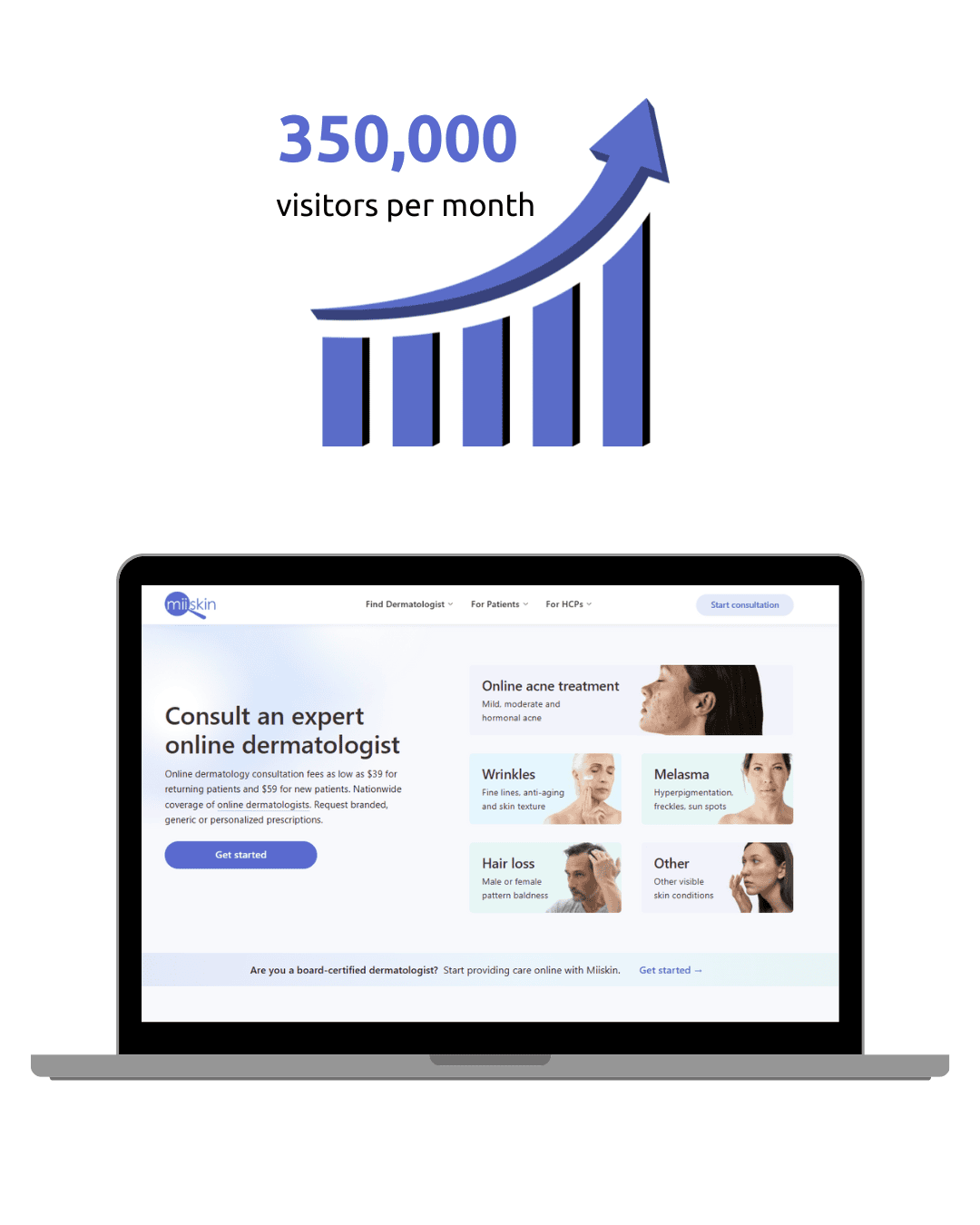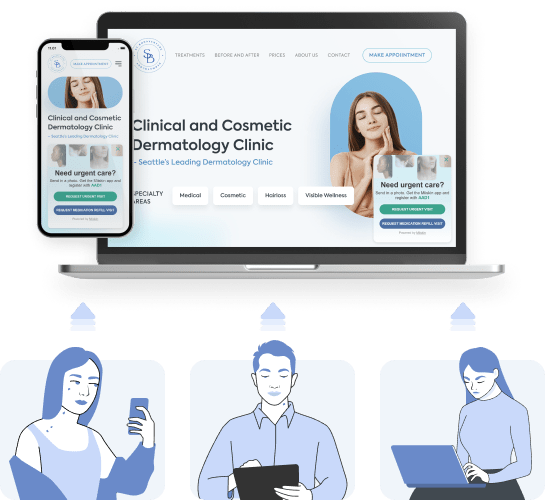Dermatology Marketing: Boost Your Dermatology Practice with Miiskin
Partner with Miiskin to scale your practice, offer telehealth to your patients and obtain sales and marketing support for your dermatology clinic.
Table of Content:
What is Miiskin? | Why partner with Miiskin? | The Miiskin advantage | Website Design | SEO | Social Media | Advertising
Our commitment to producing high-quality content:
The information presented in this article is based on scientific research and the professional advice of our Content Medical Reviewers, who are experts in the field of Dermatology. How we write our content →
At Miiskin, we partner with independent dermatology practices ready to scale. Through our collaboration, you’ll gain access to our top-tier asynchronous telehealth platform—along with expert sales and marketing support—designed to help you increase revenue, operate more efficiently, and focus on patient care.
What is Miiskin?
Miiskin is a digital health platform designed specifically for dermatologists, offering a powerful combination of asynchronous telehealth technology that also provides expert sales and marketing support. For private dermatology practices, Miiskin provides the tools to streamline patient care, boost visibility, and grow revenue—without sacrificing clinical autonomy. With no upfront costs and flexible support services, Miiskin helps practices attract more patients, enhance their online presence, and operate more efficiently.
Why partner with Miiskin for your dermatology digital marketing?
The Miiskin platform empowers you with more flexibility and freedom. With our asynchronous telehealth solution, you can review patient requests at your convenience—anytime, anywhere. Each consultation only takes a few minutes and adds meaningful revenue to your practice. Best of all, there are no upfront subscription fees—just a simple $10 usage-based fee per consultation.
Our goal is to help you grow—whether that means attracting new patients, expanding your service offerings, or reclaiming time spent on ineffective marketing efforts. With Miiskin, you maintain full clinical and brand autonomy, while we take care of the sales and marketing behind the scenes.
For Dermatologists in USA only
Want Dozens of New Patients Every Month?
Partner with Miiskin and start receiving a steady stream of new patients — simply by joining the platform!
✅ You must have a private practice
✅ You must have your own malpractice insurance
There’s no upfront subscription — just a $10 usage fee.
Boost your revenue starting today!
The Miiskin Advantage: Digital marketing for dermatologists
In today’s crowded market, differentiation is key. Miiskin helps your practice rise above the competition by executing targeted, results-driven marketing strategies focused on the states where you’re licensed to practice. We bring the patients to you—so you can focus on delivering exceptional care.
Dermatology sales and marketing support
Dermatology website design
We’ll create a high-performing custom landing page that showcases your telehealth services and highlights what sets your private practice apart. Unlike most new websites that struggle with visibility, your page benefits from Miiskin’s growing customer base—built from hundreds of dermatologist-reviewed pages.

Dermatology SEO (Search Engine Optimization)
With over 350,000 monthly visitors, the Miiskin website and app connect patients actively searching for dermatology solutions. Whether they’re battling acne or looking for anti-aging care, you’ll have the opportunity to serve these patients directly through your practice.
Besides, by reviewing our medical content, you can increase your visibility and establish yourself as a thought leader in digital dermatology.

Dermatology social media
In today’s digital world, video is one of the most powerful tools for connecting with potential patients. To help you stand out and grow your online audience, Miiskin offers hands-on support for creating high-quality, engaging video content tailored to your practice and services.
All you need to do is send us raw footage—whether it’s a quick explainer video or a patient education snippet. Our creative team will take it from there, transforming your content into compelling, professionally edited videos that resonate with your audience and reflect your expertise.
These videos can be used across Instagram Reels, Facebook, Threads, and even TikTok, helping you increase visibility, build trust, and drive more engagement from both current and prospective patients.
With Miiskin, you’re not just active on social platforms—you’re visible, memorable, and growing.
Dermatology advertising
Platforms like Google, Instagram and Facebook, are powerful tools for promoting your telehealth services. We will manage and help you maximize your advertising budget to drive consultations specifically in the states where you’re licensed to practice dermatology. With our guidance, you’ll position yourself as a trusted, affordable, and accessible expert dermatologist in your area.
Miiskin is also LegitScript certified, which is essential for advertising healthcare services online. This certification ensures our platform meets strict standards for transparency, safety, and regulatory compliance—which means your ads are approved to run ads on platforms like Google, Facebook, and Instagram without delays or issues. This allows you to confidently promote your services, knowing your marketing is compliant and credible in the eyes of both regulators and patients.
Let’s grow—together
Whether you’re launching a new practice or expanding an existing one, Miiskin is your dedicated partner in dermatology growth. We’ll help you attract the right patients, elevate your brand, and achieve sustainable success—while you focus on providing top-tier care.
Contact Miiskin today to discover how we can help your dermatology practice thrive. top of that, some nationwide online dermatology services diverge patients from local private dermatology clinics.
For Dermatologists in USA only
Want Dozens of New Patients Every Month?
Partner with Miiskin and start receiving a steady stream of new patients — simply by joining the platform!
✅ You must have a private practice
✅ You must have your own malpractice insurance
There’s no upfront subscription — just a $10 usage fee.
Boost your revenue starting today!



 Want to become an online dermatologist with Miiskin?
Want to become an online dermatologist with Miiskin?
